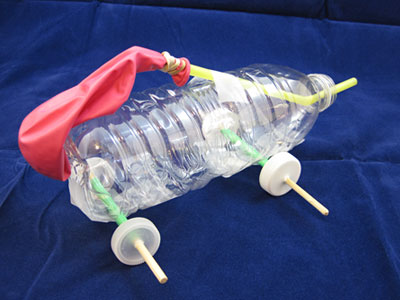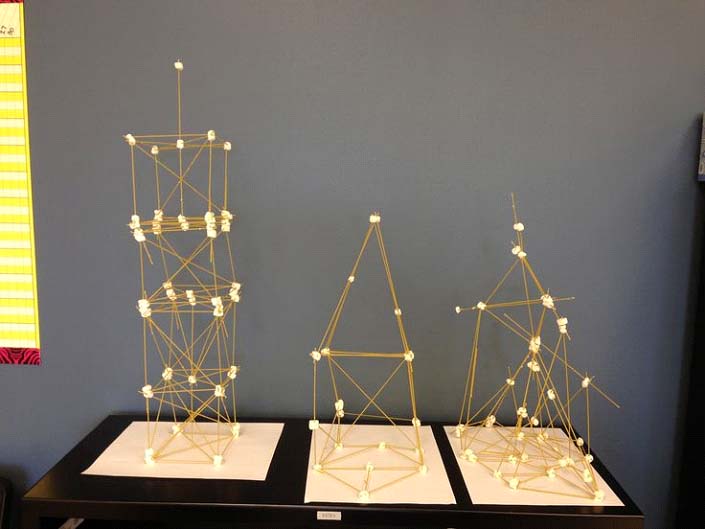STEM
-
Posted: April 17, 2019Categories: STEMRead more »
Try this awesome combination of two classic science activities - Oobleck Slime and the Egg Drop. The result of this experiment might surprise you!
-
Posted: May 06, 2018Categories: STEMRead more »
Balloon Powered Car:

Design a car that is able to move the furthest using the power of just one balloon. Materials might include bricks such as Lego, or recycled materials, or a set amount of materials.
-
Posted: May 06, 2018Categories: STEMRead more »
STEM TASK: CAMOUFLAGING ART
ALL AGESWhat is an adaptation?
An adaptation is a physical or behavioral characteristic that an organism has developed over time to increase its chances of survival in a particular environment.
What is camouflage?
Camouflage is a method of making oneself hard to detect. An animal may be trying to conceal its appearance, sound, or scent. The term is used most often to describe an animal blending into its surroundings. Camouflage is an adaptation.
What are some different types of camouflage?

The most common type of camouflage is background matching. That means the animal is blending into its surroundings and is therefore more difficult to see. This
-
Posted: May 06, 2018Categories: STEMRead more »
STEM TASK: CODING A PIRATE
Lower/Middle Primary“Computers are amazing, but they can’t think for themselves (yet!). They require people to give them instructions. Coding is a list of step-by-step instructions that get computers to do what you want them to do. Coding makes it possible for us to create computer software, games, apps and websites.” https://www.learningpotential.gov.au/what-is-coding
Materials: cardboard, lego pieces and sticky notes.
CODING A PIRATE
Will the Captain of the ship stop the pirate from stealing the jewels? Use basic coding to find out!- Set out the obstacles as you like in any of the squares.
- Place your characters on the stars. They can face whatever direction you choose.
- Use the sticky notes to select the direction of movement.
-
Posted: May 06, 2018Categories: STEMRead more »
STEM ACTIVITY: Designing a Wind Powered Car
Middle to Upper PrimaryBook: Ollie and the Wind (Ronojoy Ghosh)
Key Concepts: Energy Transformation, Engineering Design process, Forces, Measurement.
In Victoria, we generate most of our electricity from fossil fuels. Fossil fuels are considered a polluting, non-renewable form of energy. It is the job of future engineers to develop clean and sustainable means of producing energy for both electricity and to power our cars.
Energy is the ability to do work. Energy comes in many forms: chemical energy, electrical energy, heat energy, light energy, mechanical energy and nuclear energy. Wind energy is a form of renewable energy that comes from wind. Other types of renewable energies include slow but steady tidal power, geothermal power (only possible in some areas, tapping heat from deep in the Earth), and biofuels (fuels derived from plants and algae). These energy types
-
Posted: May 06, 2018Categories: STEMRead more »
STEM TASK: TANGRAMS
Middle Primary SchoolKey Concepts: Geometric Shapes in man made structures or nature.
Artists have been taking inspiration from their surroundings for centuries and using geometric shapes to represent it. Man made and natural structures also provide excellent examples of geometric shapes.



An urban landscape -
Posted: May 06, 2018Categories: STEMRead more »
Egg Drop Challenge:

Design a contraption that protects a falling egg (or water balloon) when it is dropped from a set height. Set a limited amount of resources. Resources could be anything recycled.
Possible contexts could be helmet design, parachutes, landing a rover on Mars.
-
Posted: May 06, 2018Categories: STEMRead more »
Bridge Challenge:

Design and build a free-standing bridge that will support as much weight as possible. The bridge must span an opening of 30 cm and must be wide enoguh for a toy car to drive over it. (Materials can vary for this task: Spaghetti could be used again, or plastic straws, balsa wood, string, paddle pop sticks, masking tape, drawing pins, etc.)
Extra challenge and extra maths: The bridge must be as light as possible. The bridge with the best ‘strength to weight’ ratio wins.
-
Posted: May 06, 2018Categories: STEMRead more »
Spaghetti and Marshmallow tower:

A variation on the Marshmallow Challenge, where this time marshmallows can be used to form part of the structure. Build the highest, free-standing structure possible out of 30 marshmallows and 20 pieces of raw spaghetti. (For extra challenge: The structure must support the weight of a book).
-
Posted: May 06, 2018Categories: STEMRead more »
Marshmallow Challenge:

Build the highest, free-standing structure from 20 sticks of (uncooked) spaghetti, one metre of string and one metre of masking tape, in just 18 minutes. The tower must be able to support a marshmallow at the top.










